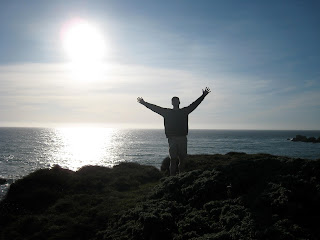What wonderful advice! How often
do you take a few minutes during the course of a day to simply sit still and do and
think nothing?
Doing nothing does not require
great outlays of money, investing in complicated equipment, cooking up a fancy
meal – since all you do is….nothing. A quick pause. A little
time-out. A quiet reset. A few
moments of just being and existing. The benefits are tremendous. You are giving your body and your mind a well-deserved break. Every night
when you go to bed and sleep your body is being allowed to rest. How about, during the course of a busy 16 hours on the go, giving your mind and body a special present by allowing yourself to do nothing, think nothing? My favorite ‘tool’ to achieving this sensation of absolute
bliss is my hammock. It is the
most comfortable place I have found anywhere in the world to relax, and it is
hidden in a quiet corner of the garden that I consider my oasis. If you want to
give yourself a well-deserved treat, relax into a comfortable hammock and
‘switch off’. Just a few minutes
suffice to give your body a powerful reboot.
In her ‘do nothing’ secret, Beare
recommends meditation as a form of
‘doing nothing’. I recommend breathing
meditation. It sounds easy, but is extremely challenging. Just a
few minutes of breathing meditation will help you calm down and increase your
sense of peace. Breathing meditation takes practice, and if you are new to this
practice, patience is a virtue. The instructions are simple:
Find a comfortable, quiet place
to rest
Stand, sit or lie down (I prefer not to lie down because invariably, I fall asleep)
If you have never meditated
before, you may wish to start by sitting comfortably – either cross-legged or
on a chair
Keep your back straight
Close your eyes
Draw your attention to your
breath
Breath naturally, through your
nostrils
Observe as your breath enters
your body, leaves your body, enters your body, leaves your body
Concentrate on the sensation of
the breath entering and leaving
If you catch your thoughts
starting to wander, observe your thoughts and gently bring your attention back
to your breath
You may notice how busy your mind
is, and how much it wants to chase the different thoughts that keep popping up
Acknowledge the thoughts in a
non-judgmental manner, let go of them, and gently bring your attention back to
your breath
As your mind starts to quiet
down, you may notice a feeling of peace and contentment
This feeling of stillness helps
us cope with the relentless demands on our time and the unremitting pounding of
daily stress.
Over time you will notice that it is easier to stay with your breath for longer periods of time (minutes rather than seconds)
Over time you will notice that it is easier to stay with your breath for longer periods of time (minutes rather than seconds)
Try to set aside a few minutes a day for breathing meditation. Whenever you feel tension
building in your body, take a time-out and allow emptiness to fill your mind.
In fact, the meditation that
Beare recommends is TM, or transcendental meditation. The TM movement was
started by a wily Indian businessman by the name of Mahesh Prasap Varma (1918 –
2008). TM is practiced twice a day for 15 to 20 minutes each in a sitting position using a sound or
‘mantra’. It gained worldwide popularity in the late fifties and claims several
million followers around the world. In the U.S. you can learn TM from a certified teacher over the course of
four days for US$1,500. Some of its better-known erstwhile fans included the
Beatles and Deepak Chopra. TM has grown into a multi-million dollar business....
But back to ‘doing nothing’. I do not advocate TM. If you want to relax and do something good for your health, a hammock and/or a few minutes of
breathing meditation are a great start. Enjoy.

